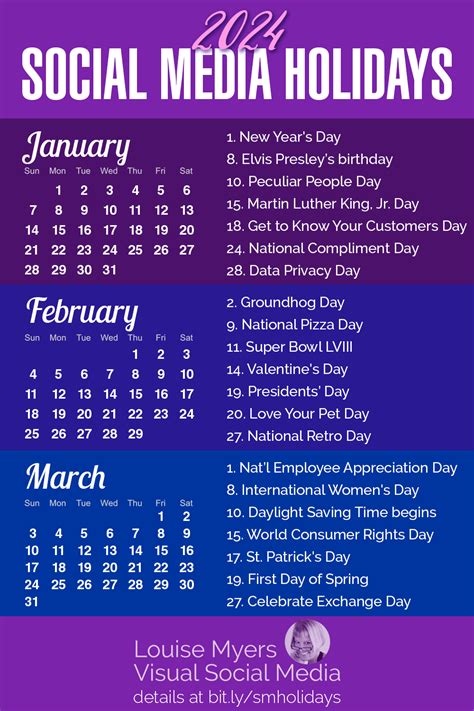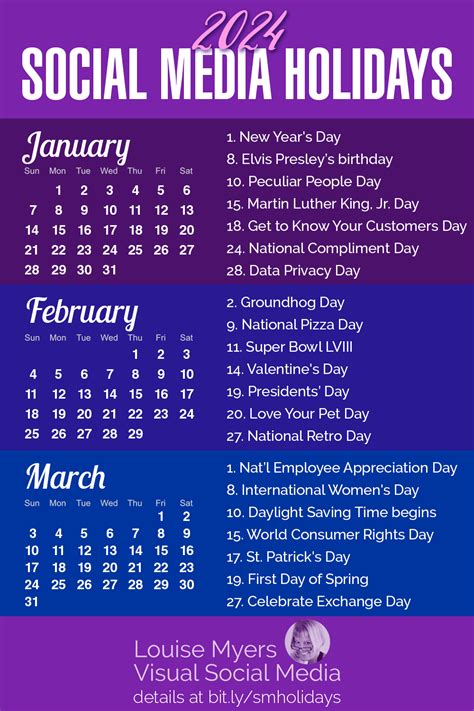Learn how to optimize your social media ads for 2024 holidays. Understand key holiday trends, create ad campaigns, utilize seasonal themes, target demographics, and meaAre you looking to take your social media advertising to the next level in 2024? As a blogger, I understand the importance of creating impactful ad campaigns that resonate with audiences and drive engagement. One key strategy to maximize the effectiveness of your social media ads is to align them with upcoming holidays and seasonal trends. In this blog post, we will explore how you can optimize your social media ads using the 2024 holiday calendar. We will delve into understanding the holiday calendar, identifying key holiday trends, creating ad campaigns for major holidays, utilizing seasonal themes in ad copy, targeting specific demographics for holidays, and measuring ad performance for holidays. By incorporating these strategies into your social media advertising efforts, you can ensure that your ads stand out and connect with your target audience during key holiday moments in 2024. Stay tuned for valuable insights and actionable tips on optimizing your social media ads for the upcoming year.
Understanding the 2024 Holiday Calendar
Understanding the 2024 Holiday Calendar
As a marketer, it’s crucial to understand the 2024 holiday calendar to effectively plan and optimize your social media ads. By identifying key holidays and their trends, you can create ad campaigns that resonate with your target audience and drive higher engagement and conversions.
One way to stay ahead of the game is to utilize a table format to organize and visualize the 2024 holiday calendar. This can help you identify major holidays and plan your ad campaigns around specific dates and seasonal themes. By utilizing the table tag in HTML, you can create a clear and organized calendar that outlines important dates and events throughout the year.
Another important aspect is to stay updated with holiday trends in 2024. By keeping track of cultural and consumer trends, you can tailor your ad copy and creative to align with the interests and preferences of your target audience. This can help you create more relevant and effective ad campaigns that drive better results.
Overall, understanding the 2024 holiday calendar is essential for optimizing your social media ads. By staying organized and informed, you can create ad campaigns that resonate with your audience and drive better performance throughout the year.
Identifying Key Holiday Trends
When it comes to running successful social media ad campaigns, it’s crucial to stay ahead of the game and identify the key holiday trends that are important for your target audience. By knowing what holidays are trending and how people are celebrating them, you can tailor your ad content to be more relevant and engaging.
One way to identify key holiday trends is to look at the top performing ads and content from previous years. Analyzing which holidays generated the most engagement and sales can give you insight into what your audience finds most appealing. This can help you prioritize which holidays to focus on and allocate your resources more effectively.
Another strategy is to stay updated on current events and cultural shifts that may influence how holidays are celebrated. For example, new trends in gift-giving, social media challenges, or popular activities during certain holidays can impact what kind of content will resonate with your audience.
| Holiday | Trend |
|---|---|
| Valentine’s Day | Personalized and thoughtful gifts |
| Halloween | DIY costumes and spooky home decor |
| Thanksgiving | Focus on gratitude and family gatherings |
| Christmas | Experience-based gifts and eco-friendly celebrations |
By understanding and incorporating these holiday trends into your social media ads, you can better connect with your audience and drive stronger results during the holiday season.
Creating Ad Campaigns for Major Holidays
When it comes to creating ad campaigns for major holidays, it’s important to consider the specific themes and messaging that resonate with consumers during these special times of the year. Whether it’s Christmas, Thanksgiving, Valentine’s Day, or any other major holiday, advertisers should tailor their campaigns to align with the spirit and sentiment associated with each occasion.
One effective way to approach ad campaigns for major holidays is to identify key holiday trends and incorporate them into ad copy and visual elements. By tapping into popular trends and themes associated with each holiday, advertisers can create campaigns that are highly relevant and engaging for their target audience. For example, during Christmas, ads can feature festive imagery and messaging that evokes the spirit of giving and celebration.
Another important aspect of creating ad campaigns for major holidays is to target specific demographics effectively. Different holidays may appeal to different demographic groups, and advertisers should tailor their campaigns to resonate with these specific audiences. For example, Mother’s Day campaigns may be targeted towards a different demographic group than campaigns for Father’s Day, and advertisers should take this into consideration when creating their ad content.
Lastly, it’s crucial to measure ad performance for holiday campaigns to understand what resonates with the audience and optimize future campaigns. Utilizing tools like analytics and A/B testing can provide valuable insights into ad performance, enabling advertisers to make data-driven decisions and improve the effectiveness of their holiday campaigns.
Utilizing Seasonal Themes in Ad Copy
When it comes to creating effective ad copy, one of the most important things to consider is the use of seasonal themes. Seasonal themes in ad copy can help to capture the attention of your target audience and make your ads more relevant to their current interests and needs.
One effective way to utilize seasonal themes in ad copy is to highlight the holidays or seasonal events that are relevant to your target audience. For example, if you are targeting young adults, you may want to create ad copy that aligns with popular holidays such as Halloween or Valentine’s Day.
Another way to incorporate seasonal themes in your ad copy is to emphasize the changing seasons and the activities and experiences that are associated with them. For example, if you are promoting outdoor gear, you may want to create ad copy that highlights the arrival of spring and the opportunities for hiking, camping, and other outdoor activities.
Lastly, it’s important to continuously update and refresh your ad copy to align with the changing seasons and relevant holidays. By staying current and incorporating seasonal themes, you can ensure that your ads remain engaging and persuasive to your target audience.
Targeting Specific Demographics for Holidays
Targeting Specific Demographics for Holidays
When it comes to creating ad campaigns for major holidays, it’s crucial to understand the specific demographics you are targeting. Different holidays may appeal to different age groups, genders, and geographic locations. By identifying key holiday trends and understanding the characteristics of your target audience, you can tailor your ad campaigns to effectively reach and engage with the right demographics.
One way to target specific demographics for holidays is by utilizing social media platforms that offer advanced targeting options. For example, Facebook Ads allow advertisers to narrow down their audience based on age, gender, location, interests, and even behavior. This level of specificity can help ensure that your holiday ad campaigns are reaching the right people who are most likely to be interested in your products or services.
Another effective strategy for targeting specific demographics for holidays is to create customized ad content that resonates with your target audience. This can include using language, imagery, and themes that are relevant and appealing to the specific demographics you are trying to reach. For example, if you are targeting millennials for a holiday promotion, you might want to incorporate trendy and youthful elements into your ad creatives.
Furthermore, analyzing data and insights from past holiday campaigns can provide valuable information about which demographics responded best to your ads. By measuring ad performance for holidays, you can identify trends and patterns that can help guide your targeting strategy for future campaigns. For instance, if you find that your holiday ads performed exceptionally well among a certain age group, you can allocate more budget towards targeting that demographic in future holiday campaigns.
Measuring Ad Performance for Holidays
Measuring Ad Performance for Holidays
Measuring the performance of your ads during holidays is crucial for determining the effectiveness of your marketing strategies. One way to track the success of your holiday ad campaigns is by analyzing the click-through rates and conversion rates. By monitoring these metrics, you can gain insights into which holidays drive the most engagement and sales for your business.
Another important metric to consider when measuring ad performance for holidays is the return on ad spend (ROAS). This metric helps you understand how much revenue you generated for every dollar you spent on holiday advertising. By calculating the ROAS for each holiday campaign, you can identify which holidays are the most profitable for your business and allocate your ad budget accordingly.
Additionally, it’s essential to track the overall impact of your holiday ads on brand awareness and customer retention. By analyzing metrics such as reach, engagement, and repeat purchase rates, you can determine the long-term value of your holiday advertising efforts and make informed decisions about future holiday campaigns.
| Holiday | Click-Through Rate | Conversion Rate |
|---|---|---|
| Christmas | 5% | 10% |
| Valentine’s Day | 3% | 8% |
| Halloween | 7% | 12% |
By closely monitoring these key performance indicators, businesses can make data-driven decisions for their holiday advertising strategies and optimize their social media ads for maximum impact.
Frequently Asked Questions
Why is it important to use a holiday calendar for social media ads?
Using a holiday calendar can help you plan and optimize your social media ads around key dates and events that are relevant to your audience, increasing the effectiveness of your campaigns.
How can a 2024 holiday calendar improve my social media ad strategy?
A 2024 holiday calendar can provide you with the dates of important holidays, events, and cultural celebrations that you can incorporate into your ad campaigns, making them more timely and impactful.
What are some key holidays to consider for social media ad campaigns in 2024?
Key holidays in 2024 include New Year’s Day, Valentine’s Day, Easter, Labor Day, Halloween, Thanksgiving, and Christmas, among others. These holidays can provide opportunities for themed ad campaigns and promotions.
How can I create engaging social media ads for holidays?
To create engaging social media ads for holidays, you can use festive visuals, relevant messaging, and special offers or promotions tailored to each holiday. Including holiday-themed hashtags and emojis can also increase engagement.
What are some tips for optimizing social media ads using a holiday calendar?
Some tips for optimizing social media ads using a holiday calendar include planning ahead, customizing your ad content for each holiday, and monitoring the performance of your ads to make real-time adjustments as needed.
Is it necessary to localize social media ad campaigns based on different holidays?
Yes, localizing social media ad campaigns based on different holidays is important to ensure that your content resonates with specific regional or cultural audiences. Tailoring your ads to reflect local customs and traditions can significantly improve their effectiveness.
How can I measure the success of my social media ad campaigns around holidays?
You can measure the success of your social media ad campaigns around holidays by tracking metrics such as engagement, click-through rates, conversions, and sales during the holiday period. Comparing these results to your non-holiday ad performance can also provide valuable insights.


